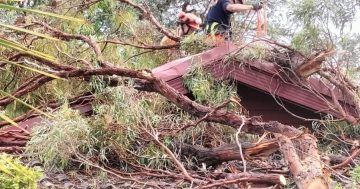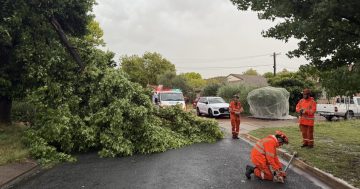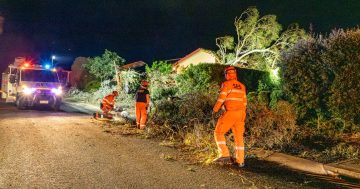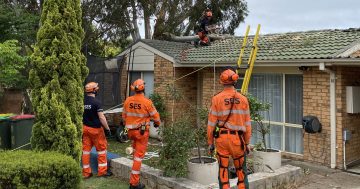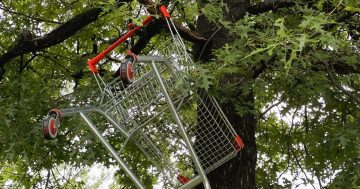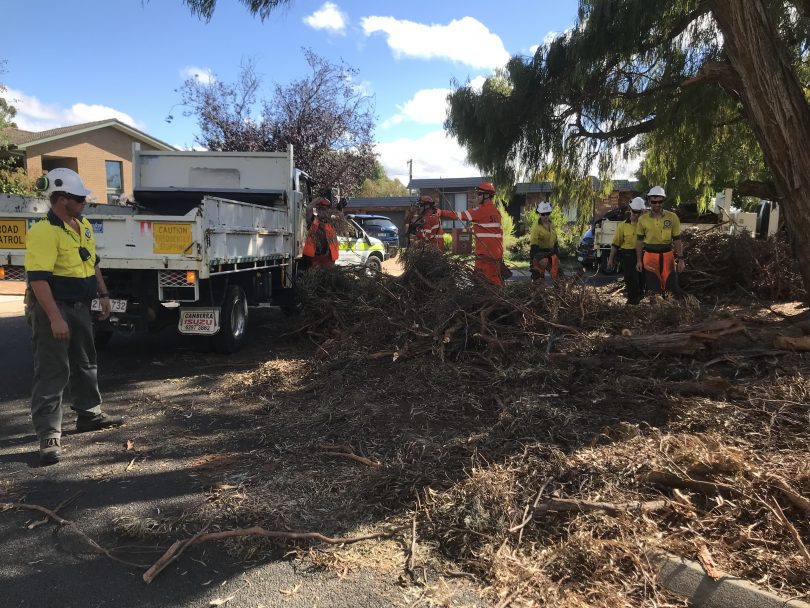
Significant clean-up efforts are now underway in Belconnen, and they are likely to continue for many months. Photo: Lottie Twyford.
A major post-storm clean-up operation in the Belconnen area will be underway for months yet as the scale of the damage begins to be understood by authorities.
The severe storm, which tore through the area on Monday, 3 January, knocked out the power of 15,000 households and left fallen trees, flooding and damaged power lines in its wake.
Just over a month later, local residents are still dealing with debris – mostly from trees – as authorities turn their attention to fallen trees and branches on public land in busy areas such as shopping centres and near schools.
Before that, hazards had been the focus and crews cleared branches off driveways, roads and paths. Nature strips, playgrounds, sports grounds and parks are the last priority.
As crews settle in for the long haul, Transport Canberra and City Services’ tree crews have had their ranks bolstered with the addition of 20 members of the ACT Parks and Conservation Services, while the ESA and the SES are managing recovery efforts.
It’s hoped the additional resources will assist in speeding up recovery efforts.
Deputy Chief Minister and Member for Ginninderra Yvette Berry said people will soon see signage indicating storm clean-up is underway.
“A lot [of the clean-up work] is still being identified. We know generally where all the debris is laying, but we encourage anyone who sees fallen trees or damaged powerlines to let the appropriate authorities know using the Fix My Street app,” Ms Berry said.
“This will help us to get a really good idea of where the damage is.”
Already, more than 2000 requests for help have been logged through the platform.
Ms Berry said she and the clean-up crews appreciated the help of the community in getting the work started but urged people to leave any remaining jobs for the professionals due to safety concerns.
“Under normal circumstances, we probably wouldn’t encourage too much of that behaviour, but given the storm event, it’s been a really great community effort with everybody chipping in,” she said.
“That’s what Canberrans do in a crisis like this … we support one another.”
Despite the continued wet weather forecast for the coming weeks and months, Ms Berry said all emergency services agencies have the capacity to deal with any other storm events that may crop up.
“When it comes to safety, that will take first priority and then the clean-up and recovery comes after that, but we have an excellent team of volunteers through the ESA and the SES as well as the RFS and generally people in the community wanting to support as well,” she said.
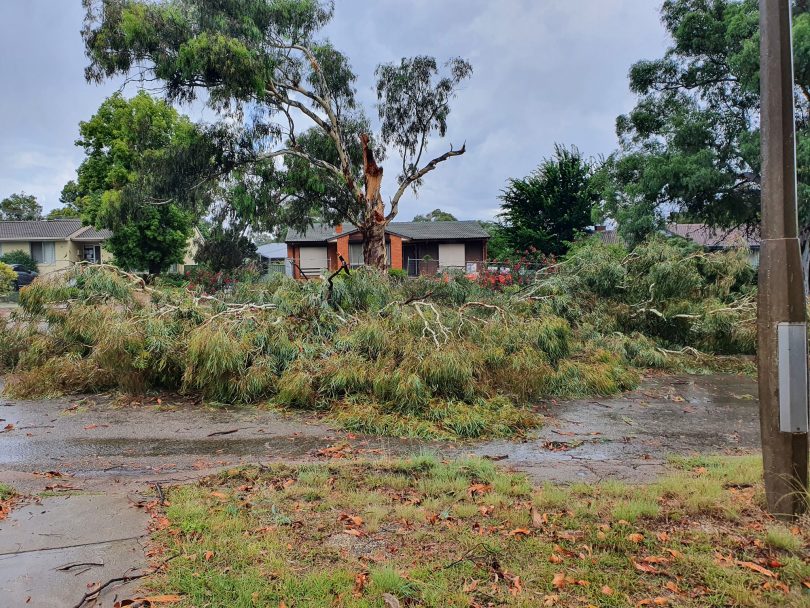
Fallen eucalypts and branches were a common sight after the January storm ripped through Belconnen. Photo: Jess Tankard.
And while some Belconnen residents have said the extent of the damage from fallen trees and branches are proof eucalypts do not belong in the suburbs, the executive branch manager of city presentation at Transport Canberra and City Services, Stephen Alegria, said it’s more of a case of Belconnen being home to lots of eucalypts.
He said any trees in the path of a storm can be damaged.
“When there’s a particularly severe storm like there was in January, clearly, many trees are going to be affected because of the strong winds and also the very moist ground conditions which make it harder for the trees to hold on.”
“Eucalypt trees are not any more susceptible to storm damage than any other tree,” Mr Alegria explained.
Treeworks arborist Steve Griffiths told Region Media that one of the main reasons behind eucalypt failure is a lack of drainage due to the build-up of urban infrastructure in the suburbs.
Eucalypts make up around 60 per cent of the ACT’s tree canopy.
“In our planting program for the urban forest, we look to do a diversity of trees – both eucalypts, native species and exotic species. It all depends on the circumstances and the local conditions,” Mr Alegria said, “but we know that eucalypts play a very important role in the urban area and will continue to do so in the future.”
For more information on the ongoing storm recovery, visit City Services.












